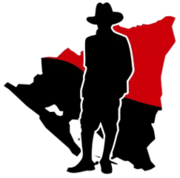More languages
More actions
 | Some parts of this article were copied from external sources and may contain errors or lack of appropriate formatting. You can help improve this article by editing it and cleaning it up. (November 2021) |
Sandinista National Liberation Front Frente Sandinista de Liberación Nacional | |
|---|---|
 | |
| Abbreviation | FSLN |
| President | Daniel Ortega |
| Founders | Carlos Fonseca Silvio Mayorga Tomás Borge Casimiro Sotelo |
| Founded | 19 July 1961 |
| Newspaper | La Voz del Sandinismo |
| Youth wing | Sandinista Youth |
| Political orientation | Christian socialism Anti-capitalism Anti-imperialism |
| Religion | Christian |
| Continental affiliation | São Paulo Forum |
| Colours | Official: Red and Black Customary: Carmine red |
| National Assembly | 75 / 90
|
| Central American Parliament | 15 / 20
|
The Sandinista National Liberation Front (Spanish: Frente Sandinista de Liberación Nacional, FSLN) is a socialist political party in Nicaragua. Its members are called Sandinistas in both English and Spanish. The party is named after Augusto César Sandino, who led the Nicaraguan resistance against the United States occupation of Nicaragua in the 1930s.[1]
The FSLN overthrew Anastasio Somoza DeBayle in 1979, ending the Somoza dynasty, and established a revolutionary government in its place.[2][3] Having seized power, the Sandinistas ruled Nicaragua from 1979 to 1990, first as part of a Junta of National Reconstruction. Following the resignation of centrist members from this Junta, the FSLN took exclusive power in March 1981. They instituted a policy of mass literacy, devoted significant resources to health care, and promoted gender equality[4] A US-backed group, known as the Contras, was formed in 1981 to overthrow the Sandinista government and was funded and trained by the Central Intelligence Agency.[5] In 1984 elections were held[6] but were boycotted by some opposition parties. The FSLN won the majority of the votes,[7] and those who opposed the Sandinistas won approximately a third of the seats. The civil war between the Contras and the government continued until 1989. After revising the constitution in 1987, and after years of fighting the Contras, the FSLN lost the 1990 election to Violeta Barrios de Chamorro but retained a plurality of seats in the legislature.
Since 2006, the FSLN has been Nicaragua's sole leading party. It often polls in opposition to the much smaller Constitutionalist Liberal Party, or PLC. In the 2006 Nicaraguan general election, former FSLN President Daniel Ortega was reelected President of Nicaragua with 38.7% of the vote to 29% for his leading rival, bringing in the country's second Sandinista government after 17 years of other parties winning elections. Ortega and the FSLN were reelected in the presidential elections of 2011, 2016, and 2021. The Sandinistas have implemented social programs such as "Zero Usury" to provide microcredit to the poor.[8]
References[edit | edit source]
- ↑ History Matters "To Abolish the Monroe Doctrine": Proclamation from Augusto César Sandino Retrieved 29/09/12
- ↑ The Cuban Revolution and Its Extension: Resolution of the Socialist Workers Party. Page 74
- ↑ States, Ideologies, and Social Revolutions: A Comparative Analysis of Iran, Nicaragua, and the Philippines by Misargh Parsa for Cambridge University Press. Page 224.
- ↑ "In pictures: Sandinista revolution remembered", BBC, Juny 20, 2010
- ↑ ICJ (Nicaragua v. United States of America) 27 June 1986, Retrieved 26/09/12
- ↑ 1984: Sandinistas claim election victory, BBC – On This Day
- ↑ "HowStuffWorks "Nicaragua – The Sandinista Regime and After"" (2008-02-27). Archived from the original on 2008-08-08.
- ↑ https://www.telesurenglish.net/opinion/The-Strenght-of-the-Sandinista-Model-20200529-0015.html
